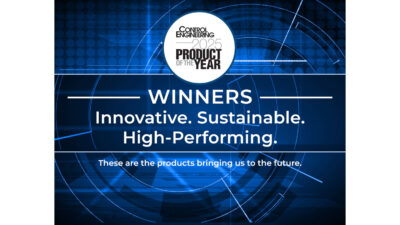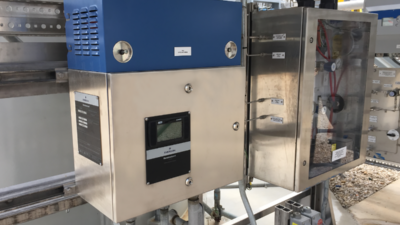Ticket into engineering My ticket into the engineering profession was my dad. He would help me with middle school math and science homework, but would use about 10 pages of clipboard paper, ultimately taking everything back to first principles. On occasion, I was allowed to borrow his Texas Instruments 8-digit LED calculator to check my work.
Ticket into engineering
My ticket into the engineering profession was my dad. He would help me with middle school math and science homework, but would use about 10 pages of clipboard paper, ultimately taking everything back to first principles. On occasion, I was allowed to borrow his Texas Instruments 8-digit LED calculator to check my work.
Dietrich Schilberg, Sr. Process Control Engineer Calvert City, KY
Thank you very much for sharing your thoughts with us, Dietrich. Like many readers who responded to our “Closing the Skills Gap” article (January 2008 issue), parents or relatives played an instrumental role in forging an early passion for Science, Technology, Engineering, and Mathematics (STEM.) Some of the organizations mentioned in the article — such as US FIRST — also offer programs for grade school students. For more information on early education programs, visit www.usfirst.org and mouse over the “what we do” link on the menu. Better still, Google “STEM education” and check out the comprehensive list of programs available. But remember… inspiration starts at home. Be sure to keep your kids and grandkids interested in what you’re working on and the fascination will follow.
Marc Moschetto, [email protected]
A wheel without an axle?
The Dec. 4, 2007, entry of the “Standard profits: Make2Pack and ISA88” blog (accessible via the homepage on www.controleng.com ) says, in part: “The Make2Pack effort does not want to reinvent the wheel. It does want to provide a formalized and repeatable way to connect wheels together to improve the construction of the desired end result, a wagon say or even a car? How about manufacturing automation!”
Today there is an automation standard that in my mind describes a lot of great wheels and how to make wheels for any need: the IEC 61499 standard on function blocks. Without these wheels, the axle is of little use except to bash things into submission, which often is the approach used in automation today.
Make2Pack intends to leverage the 61499 standard as a core part of creating a formalized and standard way to connect the 61499 wheels. The 61499 standard, like the S88 standard from ISA, identifies the need to organize and coordinate control elements to achieve the desired automation goal. Both these great standards leave a bit too much to the imagination as how to do this, and the results are very inconsistent from application to application. Taking the 61499 concepts and building a shell around the function block that can be used to manage the coordination of external connections in a formalized way is the approach being developed by the Make2Pack (M2P) effort.
David A. Chappell, Chairman, Make2Pack www.controleng.com/blog.html
Grandpa’s idea?
I just saw your article “Not Your Grandfather’s Conveyor Line!” (Nov. 2007) and thought you might be interested in seeing how old this idea really is. Please take a look at these sites: www.innalytical.com/html/case_8.html and www.innalytical.com/html/case_9.html . Obviously there are differences, but the concept is the same. Thanks for your time.
Paul D. Terpstra P.E., President, Innalytical Solutions www.innalytical.com , [email protected]
This is an interesting and clever design. I’d bet that we could find even older designs if we looked. What makes the current era interesting is that we have a critical mass of automation hardware and software to take full advantage of such technology.
Charlie Masi, [email protected]
OEE explained further
You are more than welcome to quote my paper (in Back to Basics: Overall Equipment Effectiveness, January 2008). I would raise the caution, however, that there is no such “fact” that 85% is considered a “world-class rate.” In fact, when considering process flow in discrete manufacturing, you can have a balanced flow with an OEE considerably less that 50% and still be as productive as the process can ever be. Unfortunately, the purveyors of software, OEE devices, and many books and articles do not fully appreciate the nuances of OEE. The OEE calculation should ONLY be used to compare an equipment item performance to itself over time: Never to other, dissimilar equipment, nor aggregated for anything other than a single machine, equipment or discrete process.
Robert (Bob) Williamson, Strategic Work Systems, Inc. www.swspitcrew.com



